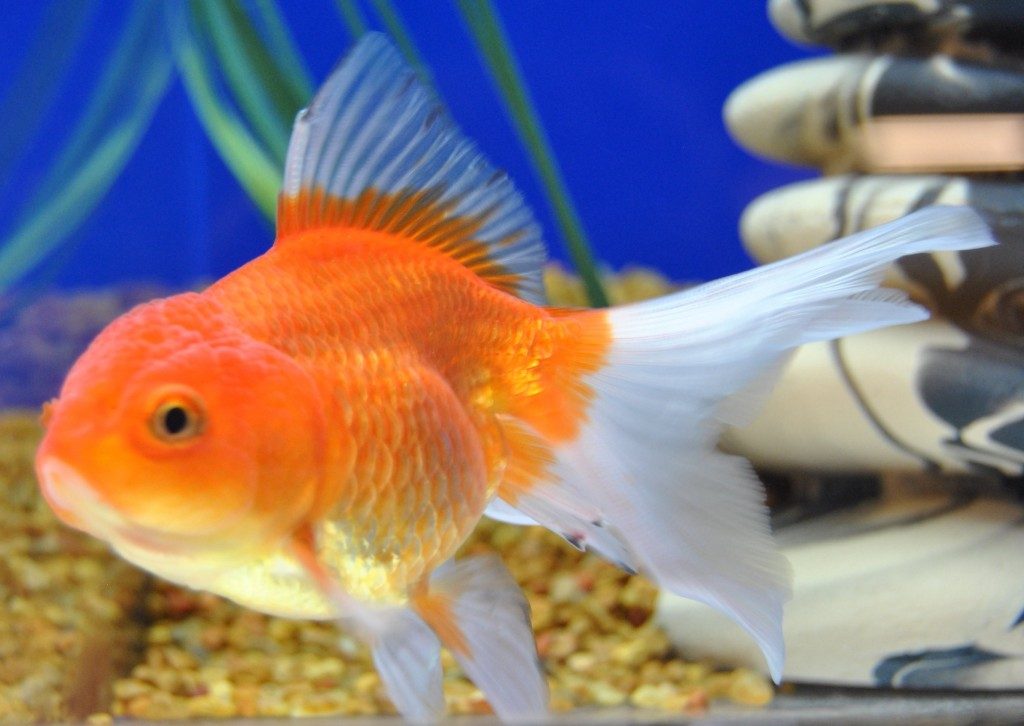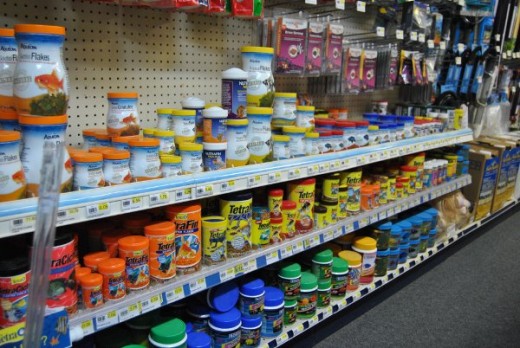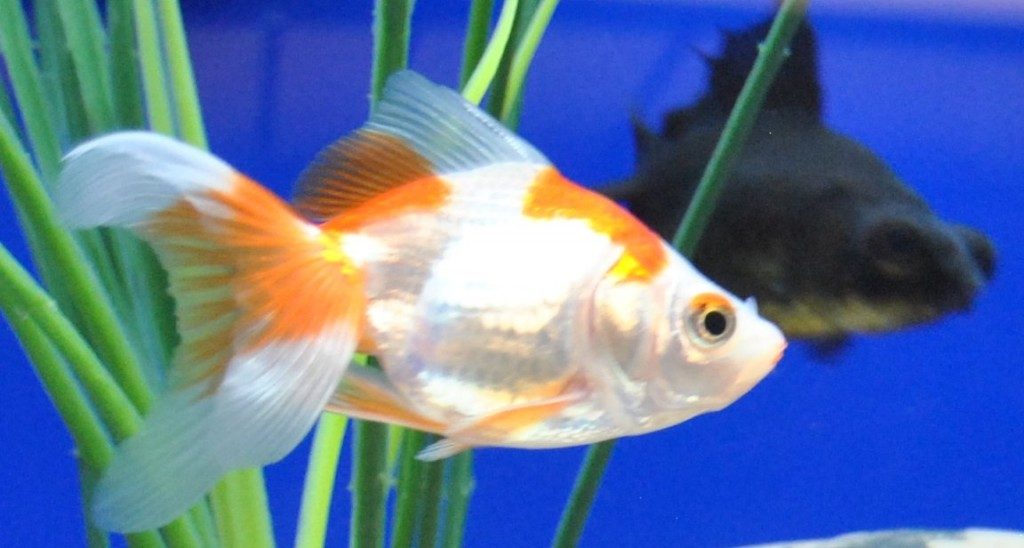
Gorging Goldfish
Learning how to feed a goldfish properly is essential for good goldfish health. Goldfish are omnivores, in other words, they eat just about anything they can get into their mouths.
Their constant feeding behavior often makes new goldfish owners think that their goldfish is starving.
One of the biggest mistakes new goldfish owners often do is to overfeed their goldfish.
The goldfish eating habits are not a problem in the wild but giving a goldfish all it can eat in captivity can lead to serious health problems or death.
Overfeeding can cause the water to cloud from a bloom of microscopic organisms that deplete the oxygen in the water causing your goldfish to suffer an early demise.
What to Feed Your Goldfish

Your goldfish should be fed a staple diet of commercially available goldfish food.
Your goldfish should not be fed tropical fish food. Tropical fish food does not meet the nutritional requirements of your goldfish.
Commercially available goldfish foods come in flakes, granules, and pellets. Depending on the size of your goldfish, you may wish to use one or all of these types of prepared foods.
Your fish can live on these foods alone however for optimal health and color, your goldfish should have a diet that varies a few times a week.
Goldfish enjoy live foods and they provide great nutritional benefits for your goldfish. The problem with live foods they carry the risk of introducing diseases and parasites to your aquarium.
Never collect live foods from ponds, rivers or lakes due to the hazards of introducing diseases and parasites to your goldfish.
Frozen food is a great alternative to live food because it is much easier to store and does not carry the same risk of parasites or disease. Most pet shops carry a good variety of frozen foods for your goldfish.
Your goldfish may also enjoy an occasional piece of leaf lettuce or leaf of spinach
How Much and How Often Do You Feed Goldfish
Goldfish don’t have a very complex digestive tract. If too much food is given to your goldfish it does not have time to fully digest. Poorly digested food is then expelled as waste.
This semi-digested food creates the perfect food source for microscopic organisms to thrive on. This leads to poor water quality resulting in frequent water changes.
To further complicate matters, frequent water changes destroy the environment required to promote the growth of beneficial microscopic organisms.
In a properly performing aquarium, beneficial microscopic organisms eat waste and help filter the water.
The most common recommendation for feeding your goldfish is to feed them as much as they will eat in a five-minute time frame twice a day.
Many experienced goldfish keepers feel it is best to have three or four smaller feedings a day.
The amount you feed them will vary depending on the age, size, and number of goldfish that are in your tank.

Is Your Goldfish Starving to Death?
Because goldfish will eat way more food than they need when kept in captivity, it is easy to think that your goldfish is starving.
If you were to feed your goldfish all it wanted it would suffer from poor health and water quality.
So long as your fish is healthy, living in a good environment at the proper temperature (approx. 67 degrees F), and is fed the proper foods, it is unlikely that your goldfish will starve to death. In fact, most healthy goldfish can go a few days without food with no ill effects.
What if the Water Turns Cloudy
If the water turns cloudy it is likely caused by one of two things, overcrowding or overfeeding. Very cloudy or smelly water should be changed immediately. If the water is only slightly cloudy this is an indication of a minor bacteria bloom and is likely to clear itself up in a few days.
Having too many goldfish or goldfish that are too large for their tank will overpower the beneficial microscopic organisms resulting in cloudy water.
A good rule of thumb is to have one square foot of surface area in the tank for every inch of fish. Using this rule, a two-inch goldfish is just about the limit of a 10 gallon tank unless specialized equipment is used to filter and add oxygen to the water.
Because goldfish grow so quickly it’s not recommended to keep even one goldfish in an aquarium smaller than 30 gallons.
Feeding your goldfish too much food will result in cloudy water also. If you are having a hard time gauging the amount of fish food to feed your goldfish try using floating pellets that are small enough for your goldfish to eat.
After five minutes you will be able to take a net and scoop up the excess food before it poses a health risk to your goldfish.
Using Aquarium Plants to Help Filter The Aquarium
Because goldfish will eat just about anything they can get into their mouths keeping live plants with goldfish can be somewhat problematic.
We have had success keeping Cryptocoryne wendtii with our larger goldfish. The goldfish do pick at it but the plants seem to do well. We have noticed that the plants tend to lay much more closely to the ground when kept with goldfish.
Other plants you may wish to consider are plants that grow very fast such as Hornwort or Anacharis. Your always hungry goldfish will nibble at the plants however if you have the right plant to goldfish ratio the plant growth can outpace the rate of nibbling they must endure.
Adding Plants For Food
Aquarium plants can be placed in the aquarium for your goldfish to eat. Keeping plants such as fast-growing Duckweek or slower growing Java Moss are welcome additions to a goldfish tank that will be quickly eaten.
